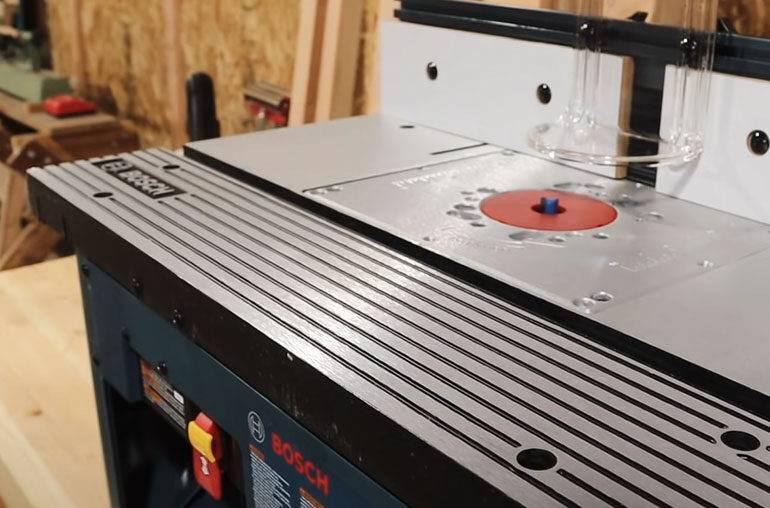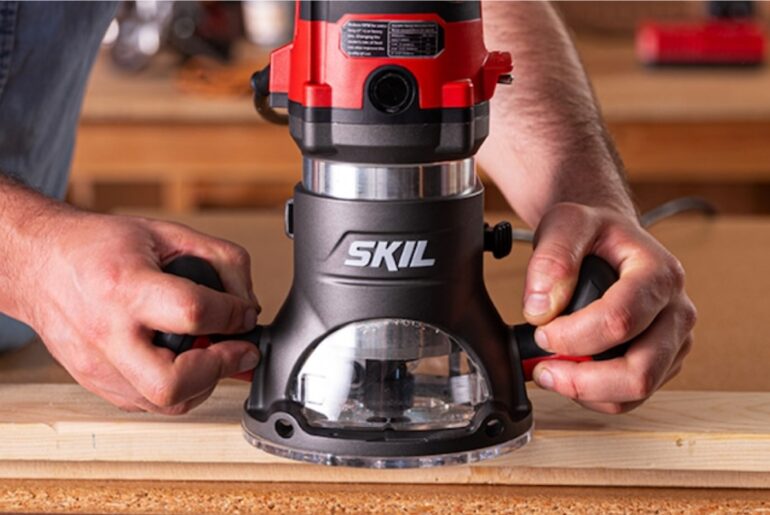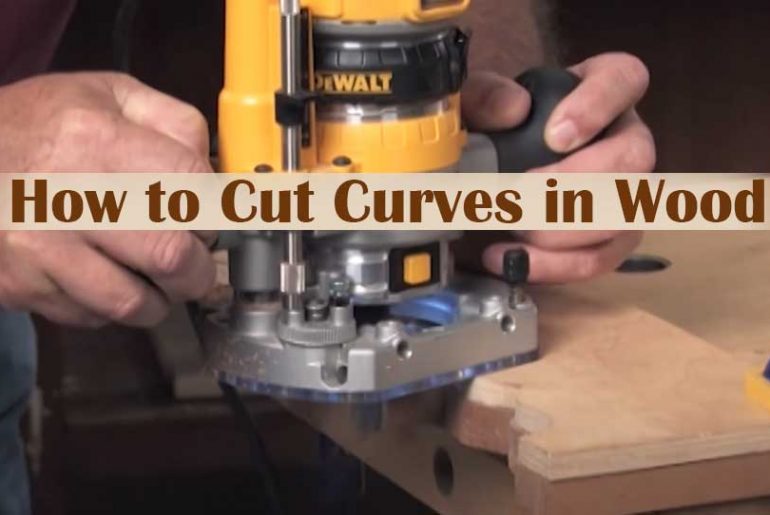Last Updated on November 11, 2022 by James Walton
As a carpenter, I’m often asked if a wood shaper can replace a router table. The answer is yes and no. Here’s why: when it comes to Wood Shaper vs Router, A shaper is designed to cut stock with precision and accuracy. It can handle large pieces of wood and create intricate designs. A router table, on the other hand, is less precise and is better suited for smaller projects.
In the world of woodworking, there are two key tools to create shapes and profiles in wood: the router and the shaper. Both of these tools have their own unique advantages and disadvantages, so the question of which one is better for a particular application is often debated on router vs wood shaper.
In this article, we’ll take a closer look at both routers and shapers to see how they compare in terms of capabilities and usefulness.
Which is better for woodworking: a wood shaper vs router
When it comes to woodworking shaper vs router, both routers and wood shapers can get the job done. But which one is better for the job? It really depends on what kind of project you’re working on.
Routers are great for more intricate work, such as carving designs into furniture or creating inlays. They’re also suitable for making moldings and trims. Wood shapers are better suited for jobs that require more brute force, such as shaping large pieces of wood or cutting dadoes and grooves.
Most of the time, people need clarification about choosing a better tool. Both devices can help you to boost your business.
Woodworking shapers and router tables are competent tools for your workplace. Your work has become easier because of these tools. But you need to know the differences accurately to choose the suitable one.
We will help you to understand the basics of them. So let’s show the useful comparisons between them and clear your confusion.
What is Wood Shaper?
A wood shaper is a useful woodworking tool. In some countries, this woodworking machine is known as a spindle molder. People can cut the wood stock by using this tool. A wood shaper has a spindle drive or vertical shaft. The spindle drive enables the shaper to reduce the share of wood. The spindle’s height is adjustable and helpful for fitting the stock.

The shaper has a worktable, and there is a fence at the rear with this. The blades can be fastened onto the spindle. The spinning blade presents a workpiece. The workpiece then matches the blade shape and cuts the wood stock.
What is a Router Table?
A router table is a handy woodworking tool. This useful tool helps you to cut the wood stock easily. You can cut the capital from any angle with the help of mounting the spinning router. This tool allows you to make a better shape to the wood stock.
It has a corner of the fence for its performance. It will help if you use a guide pin to work with proper benefits. The bit’s rotation creates a push against the guide. Many professionals complete their quite better or great projects with a router table.
Moreover, It consists of a table with a router mounted underneath. A hand-held controller controls the router and is connected to the table. The table has a fence to guide the router along the wood. The fence can be adjusted to create different shapes and sizes.
Router tables are used for a variety of woodworking projects such as making moldings, trim, and cabinet doors. They can also be used to create intricate designs in wood. Router tables come in various sizes and styles to suit any woodworker’s needs.
Difference Between Router Table and Wood Shaper
Both wood shaper vs router table is stationary tools. Though woodworkers use them for quite the same work, they have many differences. A wood shaper has a larger spindle and motor. It is more useful for more significant cuts. On the contrary, a router table is helpful for smaller cuts. A wood shaper is quite expensive, but router bits require little expense to use.
The wood shaper or spindle molder cutter spurs a longer path, but a router table can be used for shorter tracks. The results of using a shaper are smoother than that of a router. A good shaper can take up much space in a workshop, while people can incorporate a router table into a bench space.
Wood shapers are more practical for cutting heavy and more extensive wood stock. You can use this tool to make various furniture pieces, such as doors, chairs, desks, etc.
On the contrary, you may use a router table to make smaller stock pieces. Router tables provide comparatively light-duty cuts. It helps make small pieces such as window shutters, boards, boxes, etc.
If we talk about versatility, shaper or router table have different degrees. The reverse run feature of a spindle molder is handy. You can change the turn midway with the help of that feature.
Besides, it can help to create many unique shapes of stocks. Router tables provide more options for creativity. The stock is mountable from any angle. It will allow you to use additional materials also.
If the matter is about time and precision, we will find some differences too. If you want to complete a bit more work within a little time, your first choice should be a router table. Router tables work within higher RPM, which is about 10,000-30,000.
Wood shapers can work at RPM of 7000-10000
In terms of precision, you can get better results from more substantial cuts from shapers. On the contrary, router tables can give better results to smaller cuts.
If we talk about the noise part, then there are also some differences between them. Wood shapers can make more cuts with more time. But a shaper doesn’t make much noise. Whereas working with a router table produces quite a loud noise. Wood shapers are the best choice if someone wants to work in a noise-free environment.
Difference between a shaper and a router
There are many woodworking machines on the market, and they perform similar functions. Shapers and routers are two such machines. Both can be used to create moldings and other decorative features on wood projects. So, what’s the difference between shaper and router?
The blade on a shaper spins to cut wood, whereas the bit on a router spins to make precise cuts. Routers are much more versatile than shapers, as they can be used to create different shapes and sizes of holes. However, when it comes to router vs shaper, shapers are typically more accurate than routers and can create smoother finishes.
As an added bonus, shapers are more substantial devices built for intensive use. They hold the cutting instrument on a vertical spindle. Plus, they are mounted to a permanent base. Shapers can cut stock up to 12″ wide and 6″ thick. Routers are smaller, more versatile machines. They have a small base.
Moreover, it can be mounted on a table or held in your hand. Routers can cut stock up to 8″ wide and 3″ thick. The stock size you’re working with will determine which machine you should use.
Why do shapers have a reverse?
In recent years, there has been a trend among woodworkers to reverse the direction of their wood shapers. While the reasons for this are not entirely clear, there are some possible explanations.
The orientation of the shaper being reversed might be to improve accuracy while working with wood. When cutting in the traditional forward direction, the cutter can sometimes drift off course, resulting in an imperfect cut. Reversing the direction of the shaper can help to prevent this from happening.
Perhaps turning the saw around gives you more precise control over the depth of your cut, which is another good argument for doing so. When cutting in the forward direction, it can be difficult to ensure about all of the cuts are precisely the same depth.
Can a shaper replace a router table?
Regarding a shaper table vs. a router table, a router table is an excellent tool for woodworking, but it can be expensive. A shaper is a cheaper alternative to do many of the same things as a router table. With a little bit of creativity, a shaper can even replace a router table.
A machine called a shaper uses a rotating cutter head to make precise cuts in wood. It can be used to create decorative edges, round over edges, and even make raised panel doors. A router table is also capable of these tasks, but it can be more expensive and harder to set up.
With a little bit of ingenuity, a shaper can be used in place of a router table. By attaching the workpiece to the shaper with clamps or tape and using jigs and stops to guide the cuts, it’s possible to get the same results as with a router table.
FAQ
Well, at this stage of the blog, this FAQ section could be a great help for you to understand the matter more in-depth. Let’s find out more!
Can you run router bits in a shaper?
No! Although both routers and shapers have spinning bits, they are not interchangeable. If you are thinking about interchanging between router bit vs wood shapes, router bits are not designed to be run in a shaper, and doing so can damage the machine and pose a severe safety hazard.
What size shaper should I buy?
Consider the type of projects you’ll be using the shaper for. A smaller shaper will suffice if you’re primarily working on small pieces. However, if you’re working on larger projects or need more power, then you’ll need to opt for a larger model.
How do you change a shaper bit?
There are a few different ways to change a shaper bit, depending on the type of shaper you have. If you have a hand-held shaper, you can usually unscrew the old bit and screw in the new one. If you have a table-mounted shaper, you may need to use a wrench to loosen the old bit before removing it and installing the new one.
Final thoughts
It is a common fact about which is better: a wood shaper vs router. This race of choosing the perfect one is easier if you know your comfort zone. According to your needs, you can collect an effective one between them.
Here in this article above, we clearly see this matter. Both tools have their features. Every woodworker should know about the advantages and disadvantages of the devices.





